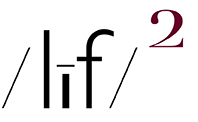all photos (embiggenable)
photography noun pho•to•gra•phy /fəˈtäɡrəfē/ : the art, application, and practice of creating images by recording radiant energy, especially light, on a light-sensitive surface.
IN AN ENTRY-The future of photo blogs-ON A “PHOTO” BLOG (as so labeled by the author), it was stated that:
“…it's almost like the joy of discussing new gear and new techniques has been wholly replaced on most of our photo blogs by personal observations about day-to-day routines, life's struggles, diets, and photo walks….”
Now I could go on a 5,000 word rant about the “joy of discussing new gear” but I won’t. Instead, I will attempt to discuss, with a modicum of intelligence, what, iMo, qualifies-and does not-as a photo(graphy) blog.
A simple / concise description of my idea of what constitutes a righteous photo(graphy) blog is one that features photographs. Blogs that feature photographs + thought-provoking words regarding the medium and its apparatus (aka: its conventions, applications, practices) are a bonus.
Or, in other words, I like blogs that, first and foremost, feature photographs that poke, prod, tickle, and challenge my visual senses. Toss in a few words / a little brain stimulation along the lines of what-the-hell-is-a-photograph-(any photograph)-anyways? and I’m hooked and the site is earmarked.
If one takes the time to find and follow some good leads, aka: links, I find that there are a surprising number of blogs / sites out there that satisfy my aforementioned wants. Rarely does a week go by during which I do not discover something new and interesting. There is a surprising amount of really good work out there being made by no-name photographers.
As for the “joy” to be had by discussing new gear, new tricks, how to-s, et al, I have to write that, for me, the “joy” eludes me. And, quite frankly, it annoys me to a certain extent that blogs which traffic in such subjects call themselves photo blogs. Whereas, at best, they might legitimately considered to be photo related blogs. Although, for example, gear related blogs most often fall into a category more accurately described as object fetishication related. AND, don’t get me started, re: “photo” bogs that constantly veer off into what the author’s eating, drinking, driving, exercising, recreating, et al habits and preferences are.
All that written, I do have an interest in reading about what an accomplished artist-big name or no name-might have to express about their vision as an integral part of what drives him/her to make pictures. However, that written, my interest in the medium of photography and its apparatus has always been about the pictures.
